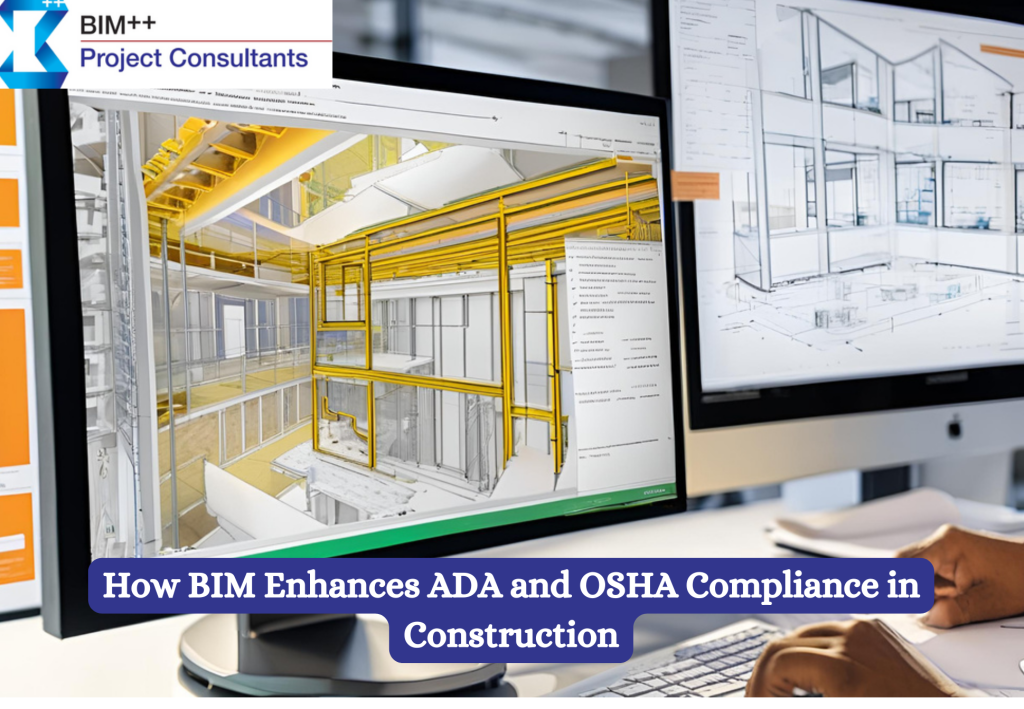
Have you ever walked into a building and wondered how it caters to everyone’s needs, including people with disabilities? Or how a construction site ensures the safety of its workers? That’s where ADA and OSHA standards come into play. But here’s the kicker: Building Information Modeling (BIM) is transforming the way we comply with these crucial standards. Let’s dive deep into how BIM plays a vital role in enhancing ADA and OSHA compliance in construction.
What Exactly Are ADA and OSHA?
Before we jump into the nitty-gritty of BIM, let’s take a moment to understand what ADA and OSHA are. The Americans with Disabilities Act (ADA) sets out to provide equal access and opportunities to people with disabilities. Think of it as a law ensuring everyone, regardless of their physical abilities, can enjoy public spaces.
On the other hand, Occupational Safety and Health Administration (OSHA) is all about the safety and wellbeing of workers. It establishes regulations to make sure that workplaces, especially construction sites, are safe and hazard-free. Imagine OSHA as the guardian of worker safety, ensuring everyone on-site goes home in one piece.
Understanding BIM: A Game Changer in Construction
Now, let’s bring BIM into the picture. If you’re envisioning BIM as some complex software, you’re partially right but it’s much more than that. BIM is a digital representation of a building’s physical and functional characteristics. It allows architects, engineers, and construction professionals to collaborate efficiently.
Think of BIM as a digital blueprint, but it’s smarter. Instead of just a static piece of paper, BIM provides a rich, detailed 3D model where every element—from the tiniest screw to entire rooms—is interconnected. By offering a broader view, BIM helps in making smarter and quicker decisions.
How BIM Enhances ADA Compliance
Let’s imagine you’re tasked with designing a new public library. How do you make sure it’s accessible to all, including those with disabilities? This is where BIM shines by:
- Visualizing Accessibility Features: With BIM, you can create 3D models that display ramps, elevators, and door widths, ensuring they meet ADA standards.
- Simulating Real-Life Scenarios: BIM allows you to simulate how someone in a wheelchair might navigate your building, enabling you to anticipate potential hurdles.
- Making Adjustments Early On: Because it’s a digital model, you can tweak designs early in the planning stages, reducing costly changes during construction.
BIM takes the guesswork out of designing accessible spaces, making it much easier to cater to everyone’s needs.
BIM’s Role in Boosting OSHA Compliance
Safety first! It’s a mantra we all know, especially in construction. BIM helps maintain this standard by:
- Identifying Hazards: By mapping out a construction site in 3D, BIM can help pinpoint potential safety hazards before they become real-world problems.
- Enhancing Communication: A clear, visual representation ensures that everyone—from architects to on-site workers—understands the safety procedures and guidelines.
- Impact Assessment: BIM allows teams to simulate conditions and assess the impact of various safety measures, ensuring they’re effective.
Picture a construction site where every stakeholder is on the same page, understanding exactly where potential hazards lie. That’s the power of BIM!
Real-World Example of BIM in Action
Consider a recent project where a university planned to upgrade its sports complex. With BIM technology, architects and planners were able to ensure that the complex adhered to ADA guidelines, like ensuring all bleachers were accessible to those with disabilities. They also used BIM to assess areas where worker safety could be compromised during construction, implementing additional OSHA-compliant measures accordingly.
This proactive approach not only ensured compliance but also resulted in a more inclusive and safe facility, making for happy visitors and workers alike.
Conclusion: BIM is the Future of Compliance
By now, you might be wondering: Is BIM really the magical solution for all construction woes? While it doesn’t have a magic wand, BIM undoubtedly enhances compliance with ADA and OSHA standards remarkably well. So, what’s the next step?
If you’re involved in construction or planning to start a project, consider integrating BIM into your process. It’s like having a guiding hand that helps you deliver projects that are safe, inclusive, and compliant. At the end of the day, it’s about creating spaces that everyone can enjoy safely and equally.
Have you or someone you know worked with BIM in the past? What was your experience like? Share your thoughts in the comments below!